Leading by Diversifying Collections
A Guide for Academic Library Leadership
Introduction
Academic libraries build collections in the context of their parent institutions—primarily to support the institution’s research, teaching, and learning mission. They also build collections that document and preserve the cultural and scientific heritage of our society to represent a wide range of perspectives. In these efforts, universities and their libraries are developing approaches that address calls for greater diversity, equity, and inclusion (DEI) with a focus on creating space for and the perspectives of historically marginalized groups.[1] Library leadership has an important role in ensuring this work is championed and steered effectively, and this guide is designed in support of that. We also anticipate this guide will be of interest to a broader audience interested in diversifying library collections, including especially those who will partner with leadership to realize the library’s goals in this area.
Although libraries have been registering progress, there is still much work to be done for collections and collecting practices to address the DEI goals.[2] As Matthew Ciszek and Courtney Young observe, library strategy related to diversity typically takes a broad focus with an emphasis on staffing, which can lead to collections-specific issues “being subsumed into the ‘big picture.’”[3] Margaret McGuire’s content analysis of diversity-related themes in strategic plans within the Association of College and Research Libraries (ACRL) institutions found that in 2020 just over one third of library plans invoked diversity in relation to collections development.[4] These observations resonate with findings from recent Ithaka S+R research, where a majority of library directors shared that they do not feel their libraries have “well-developed strategies” for decentering whiteness, which is one approach to diversifying collections in the US.[5] However, decentering whiteness is one among a number of framings, and this reflects how a major barrier to developing these strategies is the lack of definitional consensus around what DEI collections building entails. As a result, most libraries do not include specific criteria for evaluating and making decisions related to the diversity of their collections in their strategic planning.[6]
This work is further complicated by the foundational changes facing collections and collecting work today because of the digital turn and the push for more managed approaches to print collections. The very definition of a library collection has come under pressure as a result of several factors, including the substantial share of collections budgets that are devoted to licensed (rather than purchased) materials, as well as expansive thinking around discovery and access that go well beyond resources owned or licensed by a given library.[7] Rather than seeking perfection in terms of comprehensiveness, many library leaders and their partners on this work may instead wish to find a tangible place to begin to address and improve the diversity of their collections by focusing on a specific group(s) that has been historically marginalized and is a priority for their institution.
The current gap between broader library and institutional goals related to DEI and specific collection strategies to address those goals is also reflected in how libraries are organized. Historically, collections-based strategy has been delegated to library staff members overseeing major collecting units, typically an Associate University Librarian (AUL) at research libraries or a director or coordinator of collections or archives at smaller libraries.[8] Ithaka S+R research shows that while the number of DEI-related administrative roles are growing in academic libraries, they typically are not scoped with collections in their purview.[9] However, growing emphasis on institution-wide DEI strategy necessitates new and greater forms of engagement from all library employees in every department and at all authority levels, including through collecting-focused work. And some library staff have acknowledged anecdotally that support from their leadership is especially crucial for diversifying collections.[10]
Knowing that their libraries have much work to do—particularly with collections—many library directors and AULs are looking for support. Ithaka S+R developed this guide to contribute to the efforts emerging in response to this need. The guide presents a series of takeaways, exercises, and examples that those in leadership positions in academic libraries, including deans, directors, and collection heads, can utilize to begin, supplement, and review their library’s efforts to diversify collections. To develop this guide, we worked with many individuals, both in on the ground roles and in positions of authority, most of them leaders in this work. The approaches we recommend here represent an aggregated and refined version of practices that have worked to good effect in leading contexts. While we attempt to provide sufficient scaffolding to enable leaders in other institutions to adapt their approaches, we recognize that in some contexts these approaches may be an imperfect fit. As always, we advise leaders who may be interested in implementing our approach to bear in mind their local context, not only in their library but also as it is situated institutionally and regionally, in considering how to adopt and adapt from our approach.[11]
The guide is grounded in and advances the following foundational principles:
- Libraries have a unique role in supporting institution-wide DEI goals through their collection strategies.
- Meaningful contributions to collections work can come from library staff at all levels; therefore a library-wide strategy for diversifying collections must foster shared values. New organizational directions that involve cultural, budgetary, and policy change must have strong support from directors and collection managers as primary facilitators of large-scale change.
- Diversifying collections may require senior leadership to take risks in the face of opposition or inaction internally and externally
The guide is designed to help library leadership take action in ways that are grounded in the reality that every institution is unique. There is no “one size fits all” approach to address any of the field’s key issues, and the guide therefore provides a framework rather than a prescriptive method for universal application.
Developing the guide
Through a multi-stage process, we gathered the relevant information and perspectives that inform the guide. The process involved both reviewing the literature on DEI collections strategies as well as attending relevant training, panel discussions, and presentations representing a wide variety of academic institutions and resourcing levels.
The guide creation process was also informed by a series of discussions with library staff at all levels who were already meaningfully engaging with the issue of diversifying collections on the ground. These conversations shed light on the commonalities and nuances of engaging in DEI work for collections, focusing primarily on the role of library directors and other library leaders in supporting and managing change. We greatly appreciate the contributions from those who participated, and they are listed in Appendix 1 alongside further information about the engagement process.
A note on terminology
Collection: The term “collection” is used to refer to the materials that make up the holdings of an academic institution’s library, archives, and special collections. Within such collections are a variety of material types and ownership, licensing/leasing, and/or stewardship arrangements.[12]
DEI: An acronym for “diversity, equity, and inclusion,” which is used to describe the thematic framing for the guide. Libraries and their overlapping constellations of stakeholders and communities may prefer to use other framings and acronyms such as DEIA, EDI, JEDI, or IDBE.
Diversifying collections: Developing, testing, and integrating DEI-related practices so that the library’s collections better align with the needs and/or interests of stakeholder groups. While the term “diversity” can theoretically be quite broad in library contexts, such as by referring to format variety, or the right to free speech, this guide focuses on the diversity that comes from building opportunities for equity and inclusion for historically marginalized groups.[13]
DEI collections strategy: A library’s approach to diversifying collections, which ideally includes goals, action items, timelines, resource implications, metrics, and accountability measures.
Directors and collection managers: The library employees who have the primary strategic, financial, and administrative responsibilities for collections (including for diversifying collections). These individuals can have titles such as “associate university librarian,” “collections officer,” or “head of collections,” and at smaller institutions this responsibility may fall to the library director.
Selector: The library employee or employees with responsibility for recommending specific items that will be added to the library collections, often using a combination of methods that include item-level curation and larger scale tools and systems. These individuals can have titles such as “liaison librarian,” “subject librarian,” “curator,” or “bibliographer.”
Creating the process
Providing leadership in diversifying collections requires ensuring that the right process is collectively developed and in place to do the work. This involves making sure attainable goals are set, laying the groundwork among staff and external stakeholders, and guiding the strategy as it progresses. Designing and tracking progress is also an essential component to this work.
Lay the groundwork
Aligning library staff on the concepts, goals, and processes for building the collections strategy helps promote buy-in from the start. This influence can be best achieved with direct sponsorship and engagement from library administrators and involvement from a number of library departments. As part of this work it will be essential to determine how “diversity” will be defined in the context of collections and to what end the work is being done. Developing this definition is not “values free” work and is ultimately reflective of how no library is neutral. There are tradeoffs and risks involved in how collections diversity is defined, and library leadership must be prepared to defend those choices.
Exercise: Hold a listening tour
When setting a library-wide commitment to diversifying collections, it is important to engage with key stakeholders to understand their perspectives, concerns, and recommendations, and to build trust. Here are some questions that can be used to ground a listening tour focused on diversifying collections:
- What are the values that should ground our DEI collections strategy? (e.g. representation, accessibility, social justice, belonging, etc.)? How does that relate to your perception of the library’s and the institution’s values?
- How would you define each value in the context of collections work?
- In what ways do you envision a DEI collections strategy influencing you?
- How should the library measure progress? How will we know if and when we are successful?
Diversifying collections is also an issue relevant to stakeholders beyond the library. Across campus, this will include senior administrators (provost, senior research officer), other campus leaders (development/advancement directors, department chairs, research center directors), researchers in relevant subject areas, instructors who are working to diversify curricula, students, and other relevant community groups such as institutes, clubs, and associations. When institutions have administrative positions dedicated to diversity-related strategy, those individuals can be key partners in the library’s work.
In addition to campus stakeholders, peer institutions will also have valuable insight. Consortia are often a primary organizing unit for collection development and management, and other institutions may also serve as a source of support or a partner in this work. Professional associations can also provide a helpful platform for sharing ideas and networking with like-minded peers.
Beyond campus stakeholders and peers, the imperative to diversify collections often involves engaging local communities. Academic libraries are increasingly seeking opportunities to engage communities near campus to strengthen their public-facing mission (through providing programming to public schools, collaborating with local archives, or working with campus museums, for example).[14] Developing meaningful relationships with these stakeholders takes considerable time and should reflect an appreciation for the communities’ norms and practices. It is also important to recognize that depending on the local political context, the issue of diversity can be a point of conflict, and in those cases it is especially important that the library has established a clear directive and the support of institutional allies to ensure it can stay its course.
Especially for archives and special collections, donors and funders may exert influence over the materials acquired, processed, and promoted by the library. In some institutional settings, donor interests may be aligned with the library’s pre-existing collections strategy, and educating these donors about new strategic priorities will be important. Libraries may also need to identify new donors who can support these new collecting directions. Donors with links or interests in underrepresented communities can help the library diversify collections, especially with regard to content that falls outside the mainstream of regular commercial acquisitions channels.
Before or in parallel to developing wider buy-in, library leaders will work with a dedicated team to develop and enact the vision specific to diversifying collections. The staffing scaffolding of libraries, which includes subject-specific experts, such as in the form of liaisons, curators, and selectors, are essential to this endeavor. Managers must also make sure that any direct reports have sufficient time to devote to fully engage with the process by adjusting workloads.
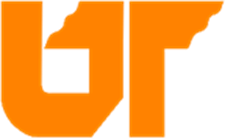 Spotlight: The University of Tennessee Libraries
Spotlight: The University of Tennessee Libraries
The University of Tennessee Libraries’ Diversity Action Plan is formatted like a table that allows readers to visualize how all the pieces of the strategy are connected. The Diversity Action Plan also includes metrics, dates, and “responsible parties.”[15]
Guide the strategy
Senior library leaders have an important role in diversifying collections strategy in partnership with the staff that will be working day-to-day to advance this work. It is at this juncture that it is important to set clear priorities about which part of the collection and/or representational concern are anchoring each phase of the implementation of their DEI collections strategy. While DEI collection priorities are typically presented in an overarching context, there can be stronger evidence of progress by specifying the focus of your efforts based on institutional goals and priorities.
For this reason, it is important to be specific when setting DEI-collections related goals and actions. Open-ended phrases like “championing diversity,” “decolonizing collections,” and “increasing equity” leave room for ambiguity and misalignment.[16] Consider instead asking “Are the library’s goals for the DEI collections strategy specific enough to identify tangible manifestations in our daily practice?” Tangible markers of progress and implementation examples are easier to communicate, and staff are better able to identify how those markers influence their work. One area where this specificity can be explicit is the development (or updating) of DEI components in subject-level collection development policy documents. If the specificity lives only at the level of the entire library’s collections, it won’t adequately point out how those goals inform action on the part of the selectors making content decisions as their daily practice.
 Spotlight: The University of Arizona
Spotlight: The University of Arizona
The University of Arizona libraries had a specific goal to make its special collection of manuscripts related to Arizona Indigenous peoples more discoverable. They conducted a comprehensive review of the catalog and finding aids and used the results to create priorities for engaging with communities, develop a guide for researchers, identify descriptive terminology warranting further review, and surface content for digitization.[17]
When defining goals that are specific and measurable, it is also important to prioritize sustainability. For example, what collections-related data does the library already collect related to this goal? In what ways could existing data be repurposed? In what ways could existing data be supplemented? These prompts reflect the need to create data collection processes that are the least taxing for employees and that produce the most useful data.
Leadership also means setting reasonable expectations about broader priorities and communicating them effectively. The following are important principles for doing this work:
- Embrace imperfection. It is unrealistic that a DEI collections strategy will be perfect, foolproof, or universally acceptable. What’s most important is that the library tries, communicates, and continues to listen and learn. An aversion to transparency or an uncritical commitment to excellence can undermine DEI work before the seeds can germinate. Further, being able to respond constructively to negativity and resistance in the context of diversifying collections and trying to understand different perspectives could be considered evidence of progress at the library.
- Manage expectations. As the library moves forward, proactive communication about plans (including updates and redirections) is part and parcel of trust building. If library employees and stakeholders have concerns or unrealistic expectations about the goals, process, and outcomes, they are less likely to support a new strategy. When diversifying collections, the humility to acknowledge that the work is constantly in progress will reduce the risks of setting unrealistic expectations.
- Communicate. Share regularly and clearly about the library’s DEI collections strategy and the progress being made with its priority items. Ensure that there are multiple forms of communication to account for how expectations vary by stakeholder group.
 Spotlight: The University of Sydney
Spotlight: The University of Sydney
The University of Sydney Library Aboriginal and Torres Strait Islander protocols feature a terminology guide including preferred terms, non-preferred terms, and terminology to consider. This section also includes guidance on how language is applied when communicating, including the importance of not using paternalistic framing to describe relevant initiatives.[18]
Track progress
The library’s goals are the foundation for creating metrics of progress, and if the ultimate goal of a DEI collections strategy is to make DEI an inextricable part of the collections work done by the library every day, the upper limit doesn’t exist. Nevertheless, it is also important to define concrete milestones so that progress can be tracked and communicated transparently as an accountability mechanism and opportunity to celebrate accomplishments.
It is essential to establish metrics of progress, but also important to recognize that those metrics will vary from library to library. The table below shows one approach for applying goals to the creation of metrics by identifying at least one tangible manifestation for each goal before generating the metric(s) and then selecting data points to measure.
Demonstrating success
| Goal | Manifestation | Evidence of success | Data |
| Increase the representation of works written in languages other than English | Portion of acquisition budget spent on works written in languages other than English | Percent of budget spend over time | Budget performance |
| Expand access to special collections for the local community | Number of visitors from the local community who visit the special collections reading room | Number of visitors by geography | Visitor counts; ZIP codes |
| Improve support for Area Studies and interdisciplinary study | FTE working with Area Studies disciplines and supporting interdisciplinary study | FTE over time | Hiring and retention |
| Diversify vendor relationships with an emphasis on equity and social justice | Number of vendors working with the library that meet certain DEI criteria | Number of vendors by type | Contracts; DEI criteria |
Incorporating a series of “small wins” keeps the momentum going and can build trust with stakeholders by demonstrating the library’s commitment to operating differently with the resources currently at hand. The table below shows how wins can be articulated on different scales.
Celebrating wins big and small
Shaping the collection
Serving as a leader in diversifying collections means taking the right steps to understand the composition of the current collection while resisting the urge to over assess. The gaps identified will help to determine not only what new materials are needed, but also what materials can be discarded or reframed.
Minimum viable assessment
While a library-wide collection assessment may seem like the necessary first step in enacting a DEI collections strategy, an all-encompassing approach involves a number of challenges. Most notably, there is no one definition for “diversity,” nor is there a methodology that can adequately account for the full breadth of diversity within collections.[19] Furthermore, there are limitations to the tools available to support libraries, including the reality that the metadata used to undergird assessment is often lacking in granularity.[20] Finally, there is the strong risk that taking any approach at full scale will lead to extreme capacity crunches, and data overload.
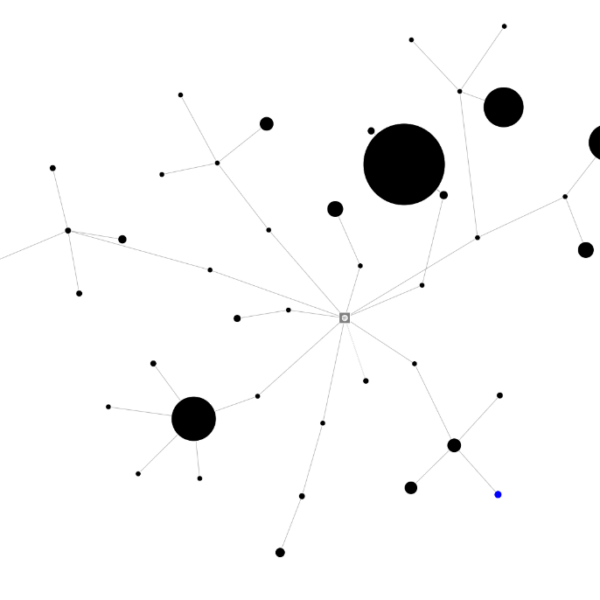 Spotlight: The Library of Congress
Spotlight: The Library of Congress
Matt Miller created an interactive visualization to display the subject distribution within collections at the Library of Congress, Harvard University, and Columbia University using MARC files. The code is freely available on GitHub and shows how visualization can inform collections assessment.[21]
Consider the following when right-sizing assessment to DEI-related collecting aims:
-
- Collection by subject, type, or format. Libraries typically choose to prioritize a part of their collections to anchor the implementation of their DEI collections strategy and make the best use of limited resources. Focusing on a part of the collection helps keep assessment manageable because assessment approaches vary by material type. For example, determining whether the description of a special collection is respectful to the Indigenous communities it represents requires a different assessment approach than determining gaps in a fiction collection of contemporary Indigenous authors. Similarly, determining the extent to which library materials are accessible to readers with print disabilities requires an entirely different approach than reviewing how content about those with print disabilities are described in the library’s discovery layers.
- Representational focus. Assessing the diversity of any given collection is further complicated by the fact that representation is not a monolithic category, and that there are nuances within and between identities and their relationship to power that lead to unique representational concerns. Narrowing the representational focus is essential to ensuring that the assessment can accommodate methodological limitations.[22] The theoretical framework of intersectionality can be applied to library practices to navigate the nuances within and between identity categories essential to navigating issues related to representational diversity.[23]
- Methodology. There are tradeoffs associated with every assessment methodology, and the challenges of adapting those approaches to DEI-specific goals makes the choices even more complex. Incorporating several different approaches helps balance out the drawbacks of any one methodology. The table below provides examples of different approaches. When reflecting on this, consider: What are the limitations of the metrics we select? How can we account for those limitations in our analysis and reporting?
Exercise: Comparing methods
Consider the following when evaluating which methods to include in your assessment:
- What will be learned from results and what gaps will remain?
- What tools are available to streamline the process?
- What skills are necessary to do the work, and do you have that expertise on hand?
Examples of Collection Assessment Methodologies[24]
| Collection-centered | User-centered |
| Compare collection titles to standard bibliographies | Evaluate circulation data, interlibrary loan, and purchasing requests |
| Create a coding scheme to analyze titles by subject heading | Conduct interviews and focus groups with patrons |
| Review author biographies for representational gaps | Review syllabi and curriculum materials |
When to grow, when to let go
Libraries typically put a strong emphasis on acquiring new materials when seeking to diversify collections, and most of the discussion around resource implications—especially budgeting—focuses there too. Adding new materials to the collections is desirable for a few reasons. Investing in new materials is especially desirable when it allows the library to support vendors, such as small presses, with DEI-aligned missions.
Though they can be controversial within the field and commonly misunderstood outside of libraries, moving offsite, deaccessioning, and weeding can help support the diversification of library collections by creating space—both physically and financially—for new materials. This reflects that access is not “all or nothing,” but rather falls on a continuum of discovery and physical/digital access.
When considering the composition of cultural heritage collections, such as those found within archives and special collections, there may be opportunities to honor the sovereignty of Indigenous communities through repatriation.[25] In cases where it is impossible to physically return artifacts to their owners, it is important to explore opportunities to maximize digital tools and resources that can help share artifact facsimiles in ways that still honor sovereignty.[26] Also, there is a need to consider new ownership models for some content such as Indigenous collections (e.g., post-custodial model to keep the collections in the community).
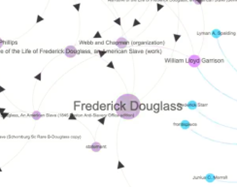 Spotlight: The Black Bibliography Project
Spotlight: The Black Bibliography Project
With funding from the Mellon Foundation, researchers at Yale and Rutgers are collaborating to provide a central clearinghouse of information about Black publications. This descriptive bibliography will provide nuanced contextual data about Black authors, their publishers, and the geographic links to how works circulate through production and sales.[27]
 Spotlight: University of Colorado Boulder
Spotlight: University of Colorado Boulder
The University Libraries at CU Boulder created a workbook for taking an anti-racist approach to collection development, foregrounding the dominance of white perspectives when assessing collections for ethnic and racial diversity. The workbook includes questions to consider when creating approval profiles, selecting and purchasing materials, cataloging and classifying materials, weeding materials, and using collections to engage with the community.[28]
The power of reframing
Pointing out new insights within a pre-existing collection can be just as powerful as adding to or subtracting from the collection. Reframing a collection to achieve DEI-related goals can be implemented by identifying opportunities to apply new descriptions to the materials and/or present the materials in new ways through different discovery and access mechanisms. The efforts to surface and redress the colonial underpinnings of library description through the University of Alberta’s Decolonizing Description project represent one especially meaningful example of work in this area.[29] Another approach is engaging in reparative description of archival collections; examples include the initiatives at Colorado State University’s Morgan Library, Digital and Archives Services and Yale University, and the guidelines created for the National Archives and Records Administration (NARA).[30]
There are a number of reasons to consider reframing pre-existing collections. These approaches can open up opportunities to engage stakeholder groups around undiscovered or suppressed stories and connect collections to new research. When there is no additional budget for acquisitions but expertise among existing staff, a project focused on reframing is an ideal way to maximize use of resources towards DEI-collecting goals.
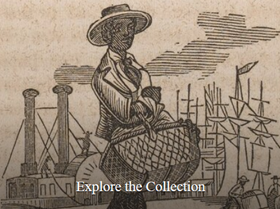 Spotlight: the Houghton Library
Spotlight: the Houghton Library
Dorothy Berry led the Houghton Library at Harvard University to pause its digitization program for the 2020 year so that resources could be re-focused on curating a digital collection on African American history and culture. Slavery, Abolition, Emancipation and Freedom features materials spanning from the 18th to early 20th centuries.[31]
Allocating resources
Serving as a leader in diversifying collections means deftly navigating the economic reality of securing resources in the academic context. In an era defined by resource constraint, securing funds for DEI-related library initiatives serves as a powerful statement to university and external stakeholders. When considering how to allocate resources adequately, it is important to recognize that staff are the most valuable resource a library has.
Structural barriers
There are a number of structural barriers that academic libraries must overcome in the process of diversifying collections. The first barrier is arguably the university, as a structure, in and of itself. Partnering with underrepresented communities is a key strategy for diversifying collections, but building those relationships takes considerable care and time.[32] Many underrepresented communities are distrustful due to their experiences of indifference, exploitation, misrepresentation, and outright erasure by universities, which libraries have often reinforced through their collecting strategies.
Naming and recognizing barriers within institutions, including its libraries, is essential to addressing them. For example, many research libraries traditionally had materials budgets that were allocated through individual lines to specific subject or curatorial areas overseen by selectors, bibliographers, and/or curators. As a growing share of the general collections budget came to be devoted to approval plans and licensing large subscription packages, this has led to less individualized purchasing. This centralized and automated purchasing environment can be especially challenging for libraries that are prioritizing diversifying collections because vendors do not consistently provide DEI-related information about authors and the subject matter. Vendors are increasingly providing tools to enable libraries to evaluate how the materials acquired from them relate to DEI-relevant criteria, but those tools are not designed to replace the more custom processes that libraries need to ensure they meet their unique goals.[33]
Furthermore, a lot of important DEI-related materials are not provided through the larger vendors, which makes it challenging for libraries to procure through their established workflows. In contrast, other vendors are specializing in creating collections related to underrepresented groups and are leveraging editorial staff to develop metadata in-house to ensure that the descriptions are responsive to the needs of their customers.[34]
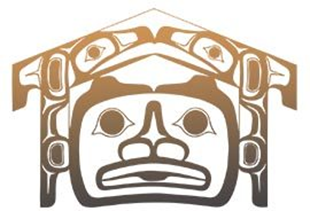 Spotlight: the X̱wi7x̱wa Library
Spotlight: the X̱wi7x̱wa Library
The X̱wi7x̱wa Library is the Aboriginal branch of the University of British Columbia library system. Its mission to “decolonize the way information is sorted, cataloged and shared by more accurately representing Indigenous knowledge and culture” necessitates dedicated staff time devoted to processes that have been automated and centralized in most libraries.[35] This allocation of resources is essential for centering First Nations cultures, communities, and collections in the library’s practice.
Endowment terms can also make it challenging to adapt available funding to evolving library priorities related to diversifying collections. This may warrant exploring the bounds of interpretation and/or a willingness to draw new bounds about what terms will be accepted for new gifts. Many libraries are also contending with significant processing backlogs, and it is important to be transparent about this with prospective donors of materials to archives and special collections.[36] Libraries need to maintain sufficient standing funding to support the timely processing of donations because requiring collections to come with funds for processing can be another structural barrier to diversifying distinctive collections.
Spending is advocacy
How libraries choose to spend money on collections procured through vendors sends a strong message to their campus community as well as to the vendors. As the proliferation of open access disrupts the status quo, will some libraries find opportunities to free up the budget to invest in other areas of the collection to support DEI-related priorities?
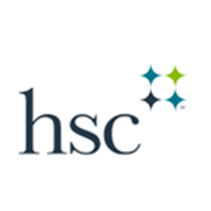 Spotlight: University of North Texas Health Science Center
Spotlight: University of North Texas Health Science Center
An evaluation of how the University of North Texas Health Science Center’s electronic resources met their DEI-related goals surfaced many roadblocks, including a lack of medical-quality images in a diversity of skin tones. In response, the center developed a comprehensive strategy to communicate to vendors about how DEI-related priorities inform their purchasing decisions, including expectations for full racial representation.[37]
For some leaders, the imperative to diversify collections presents a uniquely compelling opportunity to demonstrate why further budgetary cuts are unsustainable. To strengthen the library’s business case, faculty and instructors are essential allies. Involving these stakeholder groups in improving library services and collections, informing them about the resources required to continue their preferred library services, and communicating explicitly about how they can leverage their positionality for mutual benefit can yield fruitful results as higher education institutions seek to demonstrate their responsiveness to campus climate.
Staffing is a resource
Diversifying collections requires a willingness to invest more in the work of collecting, including building relationships with individuals and communities, creating post-custodial agreements, researching vendors, reviewing and drafting contracts, making acquisitions decisions, and assessing the content of collections.[38]
Personnel expenses are top of the list for many library directors when thinking about the main costs associated with diversifying their library’s collections. Whether identifying needs to build new competencies among current staff, dedicating more time to do collections work in ways that better foster DEI-related goals, or attracting and onboarding colleagues that bring the necessary skill sets to implement the library’s strategy, directors contend with staffing in a myriad of ways.
The following are especially important when determining whether the library has adequate human resources to meet its DEI collecting goals:
-
-
- Subject expertise. Librarians with subject and/or selector expertise have the contextual knowledge and stakeholder relationships that are crucial for assessing and acquiring materials.
- Descriptive skill. Mainstream descriptive practices are often inadequate for representing materials from diverse communities, and it takes a specialized skill set and community consultation to recognize and redress those descriptive shortcomings, including its variations among libraries, archives, and special collections.[39] Only a small subset of library professionals work at the intersection of metadata and DEI, which means that investing in awareness building and training opportunities for current staff is a crucial strategy for most libraries.
- Cultural competency and humility. There is growing recognition of how respecting the significance of culture to those from diverse groups is essential to library work and that the commitment to this work must be ongoing.[40] Because DEI, social justice, belonging, and other values associated with diversifying collections are highly subjective, measuring their presence in the culture of the library and the individual performance of employees is a difficult task. Similarly, determining cultural competency in the hiring process is an additional challenge for making new hires.
-
![]() Spotlight: MIT Libraries
Spotlight: MIT Libraries
The MIT Libraries’ 2017 report, “Creating a Social Justice Mindset,” provides recommendations for how to integrate diversity, inclusion, and social justice into daily practice for collections.[41] Staff in technical services also authored a book chapter sharing their reflections on the process and the impact for their roles.[42]
Acknowledging and addressing when the library does not have a full suite of expertise or skills in house to meet its DEI collecting goals is a meaningful action. One way that libraries commonly redress this is through collective collecting with peer libraries (including shared curation staff with specific expertise), which enables sharing of resources and knowledge across institutions. It can be especially beneficial to partner with libraries with strength in content related to the interdisciplinary study of culture, such as religious studies or area studies.
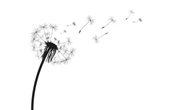 Exercise: What’s on your library’s wish list?
Exercise: What’s on your library’s wish list?
Outlining how the library will spend towards diversifying collections is essential to making the case for investment. What would you do if you had $5,000, $25,000, $50,000, $100,000, or even more to spend on diversifying collections annually? Would you spend that money on licensing or purchasing materials, re-training, new staffing line(s), or something else?
Reaching “the end”
Diversifying collections should be seen as work-in-progress as it is unrealistic to reach a final stage at which collections are perfectly or maximally diverse.[43] As academic and wider communities evolve and standards across the field change, the definition of “diverse” will shift as well. However, libraries can balance out a broader DEI imperative with the opportunity to recognize the end of specific initiatives related to that commitment. The more specific and concise a library is in how its collection diversification activities relate to its broader strategy, the easier the various endpoints will be to identify.
This approach also requires establishing an intentional cultural mindset across the library about the relationship between ongoing commitments and the specific initiatives that undergird them. For example, for staff whose work relates to diversifying collections, there may not be a formal “end” to the work, but simply a record of improvement that is reviewed and refreshed on a regular basis. Onboarding plans for new employees will need to emphasize the library’s DEI strategy and the role of staff to ensure these goals are met. Whether pausing to regroup after a pilot or building towards major, long-term goals, there may be pockets of time in which DEI collections work is dormant. The gap could be due to the semester-based calendar, the timeline for hiring and onboarding, vendor negotiations and budget cuts, or a catastrophe like a global pandemic. In any case, library leaders may need to rally colleagues around the strategy with renewed energy after a time period away.
Resources for further reading
Adjei, Karen. “Indigenous Academic Library Serves as a Model for Centering First Nations Cultures, Communities, Collections.” Library Journal 6 (June 6, 2019). https://www.libraryjournal.com/story/Indigenous-academic-library-serves-as-model-for-centering-first-nations-cultures-communities-collections.
Adler, Melissa. “Case for Taxonomic Reparations.” Knowledge Organization 43, no. 8 (2016): 630-640.
–. “Classification Along the Color Line: Excavating Racism in the Stacks.” Journal of Critical Library and Information Studies 1, no. 1 (2017). https://journals.litwinbooks.com/index.php/jclis/article/view/17.
Aguilera, Arthur, Frederick Carey, Emily Dommermuth, et al. “Anti-Racist Library Collection Building. University Libraries at University of Colorado Boulder.” March 2022. https://libguides.colorado.edu/anti-racist-collections-review-acquisitions/workbook2.
Andrews, Nicola, Sunny Kim, and Josie Watanabe. “Cultural Humility as a Transformative Framework for Librarians, Tutors, and Youth Volunteers: Applying a Lens of Cultural Responsiveness in Training Library Staff and Volunteers.” Young Adult Library Services 16, no. 2 (2018): 19-22. https://www.semanticscholar.org/paper/Cultural-Humility-as-a-Transformative-Framework-for-Andrews-Kim/04adf34256b41f4e95ba4c2ae8bab769de7d48d0.
Antracoli, Alexis A., Annalise Berdini, Kelly Bolding, Faith Charlton, Amanda Ferrara, Valencia Johnson, and Katy Rawdon. “Archives for Black Lives in Philadelphia: Anti-Racist Description Resources.” October 2019. https://archivesforblacklives.files.wordpress.com/2019/10/ardr_final.pdf.
Baildon, Michelle Baildon, et al. “Creating a Social Justice Mindset: Diversity, Inclusion, and Social Justice in the Collections of the MIT Libraries.” MIT Libraries. 9 February 9, 2017. https://libguides.mit.edu/ld.php?content_id=29481901.
Black Bibliography Project, https://blackbibliog.org/.
Carbajal, Itza A. “Historical Metadata Debt: Confronting Colonial and Racist Legacies Through a Post-Custodial Metadata Praxis.” Across the Disciplines 18 (2021).
CARLI’s Sample DEI Language Used in Collection Development Policies. April 2022. https://www.carli.illinois.edu/products-services/collections-management/Sample_DEI_Language_Used_in_Collection_Development_Policies.
Ciszek, Matthew P., and Courtney L. Young. “Diversity Collection Assessment in Large Academic Libraries.” Collection Building 29, no. 4 (January 1, 2010): 154–61. https://doi.org/10.1108/01604951011088899.
Cooke, Nicole A. Information services to Diverse Populations: Developing Culturally Competent Library Professionals. ABC-CLIO, 2016. https://www.alastore.ala.org/isdp2.
“The Diversity Stalemate: An Analysis of How the Collection Development Policies of Academic Libraries Address Diversity in Children’s Books.” Library Assessment Conference, Association of Research Libraries, 2021. https://www.libraryassessment.org/wp-content/uploads/2021/08/237-Jamison-The-Diversity-Stalemate.pdf.
Douglas, Jennifer, Greg Bak, Evelyn McLellan, Seth Van Hooland, and Raymond Frogner. “Decolonizing Archival Description: Can Linked Data Help?” Proceedings of the Association for Information Science and Technology 55, no. 1 (2018): 669-672. https://asistdl.onlinelibrary.wiley.com/doi/abs/10.1002/pra2.2018.14505501077.
Drabinski, Emily. “Queering the Catalog: Queer Theory and the Politics of Correction.” The Library Quarterly: Information, Community, Policy 83, no. 2 (April 2013). https://www.journals.uchicago.edu/doi/10.1086/669547.
Engseth, Ellen. “Cultural Competency: A Framework for Equity, Diversity, and Inclusion in the Archival Profession in the United States.” The American Archivist 81, no. 2 (2018): 460-482. https://meridian.allenpress.com/american-archivist/article/81/2/460/12340/Cultural-Competency-A-Framework-for-Equity.
Ettarh, Fobazi. “Making a New Table: Intersectional Librarianship.” In the Library with the Lead Pipe. 2 July 2014. https://www.inthelibrarywiththeleadpipe.org/2014/making-a-new-table-intersectional-librarianship-3/.
Fagnan, Luc. “Decolonizing Description: First Steps to Cataloging with Indigenous Syllabics.” Pathfinder: A Canadian Journal for Information Science Students and Early Career Professionals 1, no. 1 (2020): 33-40. https://pathfinderjournal.ca/index.php/pathfinder/article/view/21.
Ferriero, David S. “Guiding Principles for Reparative Description.” National Archives. 18 January 2022, https://aotus.blogs.archives.gov/2022/01/18/guiding-principles-for-reparative-description/.
Frederick, Jennifer K., and Christine Wolff-Eisenberg. “Ithaka S+R US Library Survey 2019,” Ithaka S+R. 2 April 2020. https://sr.ithaka.org/publications/ithaka-sr-us-library-survey-2019/.
—. “Measuring What Matters: Equity, Diversity, Inclusion, and Accessibility in Academic Library Strategic Plans.” Ithaka S+R, 26 May 2020. https://sr.ithaka.org/blog/measuring-what-matters/.
Fuller-Gregory, Christina. “DEI Audits: The Whole Picture.” Library Journal. 6 June 2022. https://www.libraryjournal.com/story/DEI-Audits-The-Whole-Picture-Equity.
Getgen, Coreen. “Cultural Humility in the LIS Profession.” The Journal of Academic Librarianship 48, no. 4 (2022). https://www.sciencedirect.com/science/article/abs/pii/S0099133322000544.
Gulliver, Lindsay, and Erin Pearson-Willbery. “Amplifying Hidden Voices in Primary Source Databases.” Against the Grain 34, no. 4: 30 September 2022. https://www.charleston-hub.com/2022/09/amplifying-hidden-voices-in-primary-source-databases/.
Haberstock, Lauren. “Participatory Description: Decolonizing Descriptive Methodologies in Archives.” Archival Science 20, no. 2 (2020): 125-138. https://link.springer.com/article/10.1007/s10502-019-09328-6.
Hathcock, April M. “Building Bridges at NDLC.” Library Journal. 1 September 2016. https://www.libraryjournal.com/story/building-bridges-at-ndlc.
Hicks, Pete, and Páraic Kerrigan. “An Intersectional Quantitative Content Analysis of the LGBTQ+ Catalog in Irish Public Libraries.” Journal of Librarianship and Information Science 52, no.4 (2020): 1028-1041. https://journals.sagepub.com/doi/full/10.1177/0961000619898212.
Hurley, David A., Sarah R. Kostelecky, and Lori Townsend. “Cultural Humility in Libraries.” Reference Services Review (2019). https://www.emerald.com/insight/content/doi/10.1108/RSR-06-2019-0042/full/html.
Jahnke, Lori M., Kyle Tanaka, and Christopher A. Palazzolo. “Ideology, Policy, and Practice: Structural Barriers to Collections Diversity in Research and College Libraries.” College & Research Libraries 83, no. 2 (2022). https://crl.acrl.org/index.php/crl/article/view/25342/33226.
Jeremias, Leigh. “DEI in Libraries and Archives: Lessons Learned from a Reparative Description Project.” Colorado Virtual Library. 9 June 2022. https://www.coloradovirtuallibrary.org/digital-colorado/plains-to-peaks/dei-in-libraries-and-archives-lessons-learned-from-a-reparative-description-project/.
Jorente, Maria José Vicentini. “Archives Information Publishing New Design in Post-custodial Regime: The National Archives Experience Digital Vaults.” Information Services & Use 31, no. 3-4 (2011): 147-155. https://content.iospress.com/articles/information-services-and-use/isu644.
Kauffman, Rhonda Y., and Martina S. Anderson. “Diversity, Inclusion, and Social Justice in Library Technical Services.” in Library Technical Services: Adapting to a Changing Environment. Ed. Stacey Marien (Purdue University Press, 2020). https://dspace.mit.edu/bitstream/handle/1721.1/121480/KAUFFMAN_ch14.pdf?sequence=1&isAllowed=y.
Laroque, Sheila. “Making Meaningful Connections and Relationships in Cataloging Practices: The Decolonizing Description Project at University of Alberta libraries.” Evidence Based Library and Information Practice 13, no. 4 (2018): 2-6. https://journals.library.ualberta.ca/eblip/index.php/EBLIP/article/view/29440.
Lawrence, E. “The Trouble with Diverse Books, Part I: On the Limits of Conceptual Analysis for Political Negotiation in Library & Information Science.” Journal of Documentation 76, no. 6 (2020): 1473-1491. https://doi.org/10.1108/JD-04-2020-0057.
McGuire, Margaret. From Concept to Practice: Themes of Diversity within the Strategic Planning of Academic Libraries. Master’s Paper, University of North Carolina at Chapel Hill. 24 April 2020. https://doi.org/10.17615/v3hc-km12.
Miller, Matt. “Library of Congress Holdings by LCC.” 11 October 2017. https://medium.com/@thisismattmiller/library-of-congress-holdings-by-lcc-51fb5eb868f2.
Norsworthy, Kent, and T-Kay Sangwand. “From Custody to Collaboration: The Post-Custodial Archival Model at the University of Texas Libraries.” Presentation slides for the 2013 Texas Conference on Digital Libraries. https://tdl-ir.tdl.org/server/api/core/bitstreams/e1f222ca-5a83-4885-b5a1-a483bf6306f0/content.
Overall, Patricia Montiel. “Cultural Competence: A Conceptual Framework for Library and Information Science Professionals.” The Library Quarterly 79, no. 2 (2009): 175-204. https://www.journals.uchicago.edu/doi/10.1086/597080.
“Protocols for Native American Archival Materials.” Information and Resources Page on SAA’s website. https://www2.archivists.org/groups/native-american-archives-section/protocols-for-native-american-archival-materials-information-and-resources-page.
“Recommendations for University Library Partners.” In Jules Bergis. Architecting Sustainable Futures: Exploring Funding Models in Community-Based Archives. February 2019, https://shiftdesign.org/content/uploads/2019/02/ArchitectingSustainableFutures-2019-report.pdf.
Reyes-Escudero, Verónica, and J. Wendel Cox. “Survey, Understanding, and Ethical Stewardship of Indigenous Collections: A Case Study.” Collection Management 42, no. 3-4 (2017): 130-138. https://www.tandfonline.com/doi/abs/10.1080/01462679.2017.1336503.
“SAA Council Approves FY 2023 Budget, Creates Archival Repatriation Committee.” 26 May 2022. https://www2.archivists.org/news/2022/saa-council-approves-fy-2023-budget-creates-archival-repatriation-committee.
Sandy, Heather Moulaison, Beth M. Brendler, and Karen Kohn. “Intersectionality in LGBT Fiction: A Comparison of a Traditional Library Vendor and a Nontraditional eBook Platform.” Journal of Documentation 73, no. 3 (2017). https://www.emerald.com/insight/content/doi/10.1108/JD-07-2016-0092/full/html.
Sappington, Jayne, Esther De León, Sara Schumacher, Kimberly Vardeman, Donell Callender, Marina Oliver, Hillary Veeder, and Laura Heinz. Library Impact Research Report: Educating and Empowering a Diverse Student Body: Supporting Diversity, Equity, and Inclusion Research through Library Collections (Washington, DC: Association of Research Libraries. 2022), https://doi.org/10.29242/report.texastech2022.
“Slavery, Abolition, Emancipation, and Freedom: Primary Sources from Houghton Library (SAEF).” https://curiosity.lib.harvard.edu/slavery-abolition-emancipation-and-freedom.
Speer, Elizabeth. “Collection and Vendor Relationships: Diversity Evaluation and Communication.” Presented at the North Carolina Serials Conference. 25 March 2022. https://www.ncserialsconference.org/slides/2022/2022-3A-1.pdf.
Tai, Jessica. “Cultural Humility as a Framework for Anti-Oppressive Archival Description.” Journal of Critical Library and Information Studies 3, no. 2 (2021). https://journals.litwinbooks.com/index.php/jclis/article/view/120.
—. “Retelling as Resistance: Towards the Implementation of Community-Centered Frameworks in the Redescription of Photographic Archives Documenting Marginalized Communities.” VIEWS 32, no. 1 (2018). https://issuu.com/saavms/docs/views_ss_2018/1.
“The Trouble with Diverse Books, Part II: An Informational Pragmatic Analysis.” Journal of Documentation 77, no. 1 (2021): 181-197. https://doi.org/10.1108/JD-06-2020-0112.
University of Sydney Library. “Aboriginal and Torres Strait Islander Cultural Protocols.” 2021. https://ses.library.usyd.edu.au/handle/2123/24602.
University of Tennessee Libraries. “Diversity Action Plan.” Last revised 21 January 2022. https://www.lib.utk.edu/wp-content/uploads/sites/15/files/2021/03/UT-Libraries-DAP-Revision-Jan21-2021.pdf.
Weber, Chela Scott, Martha O’Hara Conway, Nicholas Martin, Gioia Stevens, and Brigette Kamsler. “Total Cost of Stewardship: Responsible Collection Building in Archives and Special Collections. OCLC. 21 March 2021. https://www.oclc.org/research/publications/2021/oclcresearch-total-cost-of-stewardship.html.
Withey, Kimberly Christen. “Sovereignty, Repatriation, and the Archival Imagination: Indigenous Curation and Display Practices.” Collections 11, no. 2 (2015): 115-138. https://journals.sagepub.com/doi/10.1177/155019061501100204.
Wood, Stacy, Kathy Carbone, Marika Cifor, Anne Gilliland, Ricardo Punzalan. “Mobilizing Records: Re-framing Archival Description to Support Human Rights.” Archival Science 14, nos. 3/4, (2014). https://link.springer.com/article/10.1007/s10502-014-9233-1.
Appendix 1. External contributors
Ithaka S+R conducted a series of discussions with practitioners at all levels to provide feedback towards developing the guide. The contributors were selected because of their expertise in and/or interest in diversifying collections. Those who were unable to participate as part of the group discussion format were given the opportunity to provide their feedback directly.
The first discussion series focused on framing the issues and identifying solutions. Ithaka S+R fielded three separate sessions—one with librarians, archivists, and curators, one with collections managers, and one with library directors—to get feedback from staff in a range of roles. Following the first discussion series, Ithaka S+R developed an annotated outline of the guide. That structure was then used to thematically organize the second series of discussion groups on staffing and process, collection assessment and development, and budgeting. For the second series of discussions, Ithaka S+R reconvened the directors who had participated earlier to discuss these themes in-depth.
Once the report was drafted, we extended an open invitation to all those who participated to volunteer to serve as external reviewers, aiming for a subset that would reflect the variety of staff roles among those who had engaged in the discussion sessions.
We extend gratitude to each person who provided their insight as part of the guide engagement process, including those who also provided input into the draft (denoted by an asterisk):
- Posie Aagaard*
- Kofi Acree
- Kristin Antelman*
- Rhea Ballard-Thrower*
- Dorothy Berry
- Gwen Bird
- H. Austin Booth
- Kristin Browning-Leaman
- Whitney Buccicone
- Wesley Chenault
- Tamar Evangelistia Dougherty
- Emily Drabinski
- Chuck Eckman
- Maria Estorino
- Aparna Ghosh
- Kayla Lar-Son
- Nerea Llamas
- Joan Lubin
- Aruna Magier*
- Brenda Marston
- Jack Maness
- Helen McManus
- Bethany Nowviskie
- Mark Paris
- Carmelita Pickett
- Sarah Polkinghorne*
- Sarah Pritchard
- Tim Pyatt
- Ben Rawlins
- Yasmeen Shorish
- Maura Smale
- Amanda Strauss
- Lexie Thompson-Young
- Jennifer Vinopal
- Courtney Young
Endnotes
-
- One major strategic priority for research universities is redressing relationships with historically marginalized communities, and university leaders are impressed with the work that their libraries have done in this area and wish to see more of it. Danielle Cooper, Catharine B. Hill, and Roger C. Schonfeld, “Aligning the Research Library to Organizational Strategy,” Association of Research Libraries, Canadian Association of Research Libraries, and Ithaka S+R, 12 April 2022. https://doi.org/10.18665/sr.316656. ↑
- A helpful benchmark for understanding is the 2017 OCLC Research Library Partnership (RLP) survey, which explored how their 150 Partner institutions were modifying library and archival collections, practices, and services through the lens of equality, diversity, and inclusion (EDI), see https://www.oclc.org/research/areas/community-catalysts/rlp-edi.html. ↑
- Matthew P. Ciszek and Courtney L. Young, “Diversity Collection Assessment in Large Academic Libraries,” Collection Building 29, no. 4 (January 1, 2010): 154–61, https://doi.org/10.1108/01604951011088899. ↑
- Margaret McGuire, From Concept to Practice: Themes of Diversity within the Strategic Planning of Academic Libraries, Master’s Paper, University of North Carolina at Chapel Hill, 24 April 2020: 20, https://doi.org/10.17615/v3hc-km12. ↑
- Jennifer K. Frederick and Christine Wolff-Eisenberg, “Ithaka S+R US Library Survey 2019,” Ithaka S+R, 2 April 2020, https://sr.ithaka.org/publications/ithaka-sr-us-library-survey-2019/. ↑
- Jennifer K. Frederick and Christine Wolff-Eisenberg, “Measuring What Matters: Equity, Diversity, Inclusion, and Accessibility in Academic Library Strategic Plans,” Ithaka S+R, 26 May 2020, https://sr.ithaka.org/blog/measuring-what-matters/. ↑
- See for example Oya Y. Rieger,” What Is a Collection Anyway?” Ithaka S+R, 6 June 2019, https://sr.ithaka.org/publications/whats-a-collection-anyway/. ↑
- Roger C. Schonfeld, “Organizing the Work of the Research Library,” Ithaka S+R,18 August 2016. https://doi.org/10.18665/sr.283717. ↑
- Kara R. Bledsoe and Jennifer K. Frederick, “Advancing Strategy through Staffing: Diversity, Equity, and Inclusion Library Leadership Roles,” Ithaka S+R, 17 August 2021, https://sr.ithaka.org/blog/advancing-strategy-through-staffing/. For an example of a recently created position, see the announcement of Ufuoma C. Abiola as inaugural Executive Head and Associate University Librarian of Diversity, Equity, and Inclusion at Princeton University Library: https://library.princeton.edu/news/general/2022-08-16/dr-ufuoma-c-abiola-named-inaugural-executive-head-and-associate-university. ↑
- Rhonda Y. Kauffman and Martina S. Anderson, “Diversity, Inclusion, and Social Justice in Library Technical Services,” in Library Technical Services: Adapting to a Changing Environment, ed. Stacey Marien, (Purdue University Press, 2020), 213–36, https://doi.org/10.2307/j.ctvs1g8h5.17. ↑
- At the 2016 National Diversity in Libraries Conference (NDLC), Mark Puente—then the Association of Research Libraries’ Director of Diversity and Leadership Progress—summarized the goal of this guide well when speaking about the goals of NDLC: “I don’t want this to be about best practices. I want this to be about motivation and action. See, April M. Hathcock, “Building Bridges at NDLC,” Library Journal, 1 September 2016, https://www.libraryjournal.com/story/building-bridges-at-ndlc. ↑
- Oya Y. Rieger, “What Is a Collection Anyway?” Ithaka S+R, 6 June 2019, https://sr.ithaka.org/publications/whats-a-collection-anyway/. ↑
- While not exhaustive, CARLI’s Sample DEI Language Used in Collection Development Policies (April 2022), provides many examples where the imperative to diversifying collections is grounded in the representation of historically marginalized groups. See: https://www.carli.illinois.edu/products-services/collections-management/Sample_DEI_Language_Used_in_Collection_Development_Policies. ↑
- Liam Sweeney, “Small but Mighty: Spelman College Museum,” Ithaka S+R, 7 June 2018, https://doi.org/10.18665/sr.307535. ↑
- University of Tennessee Libraries, “Diversity Action Plan,” last revised 21 January 2022, https://www.lib.utk.edu/wp-content/uploads/sites/15/files/2021/03/UT-Libraries-DAP-Revision-Jan21-2021.pdf. ↑
- As Andrea Jamison highlights, “to be fully understood, diversity has to be specified,” see “The Diversity Stalemate: An Analysis of How the Collection Development Policies of Academic Libraries Address Diversity in Children’s Books” (Library Assessment Conference, Association of Research Libraries, 2021), 13, https://www.libraryassessment.org/wp-content/uploads/2021/08/237-Jamison-The-Diversity-Stalemate.pdf. ↑
- Verónica Reyes-Escudero, and J. Wendel Cox, “Survey, Understanding, and Ethical Stewardship of Indigenous Collections: A Case Study,” Collection Management 42, no. 3-4 (2017): 130-138, https://www.tandfonline.com/doi/abs/10.1080/01462679.2017.1336503. ↑
- University of Sydney Library, Aboriginal and Torres Strait Islander Cultural Protocols, 2021, https://hdl.handle.net/2123/24602. ↑
- For an example of the fraught categorization of diversity related to library materials, see E.E. Lawrence’s two-part series on the issue of “diverse books.” E.E. Lawrence, “The Trouble with Diverse Books, Part I: On the Limits of Conceptual Analysis for Political Negotiation in Library & Information Science” Journal of Documentation 76, no. 6 (2020), 1473-1491, https://doi.org/10.1108/JD-04-2020-0057, and “The Trouble with Diverse Books, Part II: An Informational Pragmatic Analysis,” Journal of Documentation 77, no. 1 (2021), 181-197, https://doi.org/10.1108/JD-06-2020-0112. The email list for assessing library collections for diversity, equity and inclusion [ASSESSDIVCOL-L@LISTSERV.UGA.EDU] is maintaining a resource list and Zotero library related to this topic, see https://app.box.com/s/i8kqp7lacv1uuvolktqrx16vcy8izjho/file/995298585259 and https://www.zotero.org/groups/4633903/dei_assessment/library. ↑
- Jayne Sappington, Esther De León, Sara Schumacher, Kimberly Vardeman, Donell Callender, Marina Oliver, Hillary Veeder, and Laura Heinz, Library Impact Research Report: Educating and Empowering a Diverse Student Body: Supporting Diversity, Equity, and Inclusion Research through Library Collections (Washington, DC: Association of Research Libraries, 2022), https://doi.org/10.29242/report.texastech2022. ↑
- Matt Miller, “Library of Congress Holdings by LCC,” 11 October 2017, https://medium.com/@thisismattmiller/library-of-congress-holdings-by-lcc-51fb5eb868f2. ↑
- For an example of how to conduct collections-related assessment on a discrete representational category informed by intersectionality see Heather Moulaison Sandy, Beth M. Brendler, and Karen Kohn, “Intersectionality in LGBT Fiction: A Comparison of a Traditional Library Vendor and a Nontraditional eBook Platform,” Journal of Documentation 73, no. 3 (2017), https://www.emerald.com/insight/content/doi/10.1108/JD-07-2016-0092/full/html, and Pete Hicks and Páraic Kerrigan, “An Intersectional Quantitative Content Analysis of the LGBTQ+ Catalog in Irish Public Libraries,” Journal of Librarianship and Information Science 52, no.4 (2020): 1028-1041, https://journals.sagepub.com/doi/full/10.1177/0961000619898212. ↑
- Fobazi Ettarh, “Making a New Table: Intersectional Librarianship,” In the Library with the Lead Pipe, 2 July 2014, https://www.inthelibrarywiththeleadpipe.org/2014/making-a-new-table-intersectional-librarianship-3/. ↑
- Adapted from Matthew P. Ciszek and Courtney L. Young, “Diversity Collection Assessment in Large Academic Libraries,” Collection Building 29, no. 4 (January 1, 2010): 154–61, https://doi.org/10.1108/01604951011088899. ↑
- Building on recommendations from its Native American Archives Section, the Society of American Archivists council approved the creation of an Archival Repatriation Committee in May 2022. The creation of the new committee acknowledges archivists’ need for support related to repatriation and receiving archival materials, see “SAA Council Approves FY 2023 Budget, Creates Archival Repatriation Committee,” 26 May 2022, https://www2.archivists.org/news/2022/saa-council-approves-fy-2023-budget-creates-archival-repatriation-committee. More resources on protocols for Native American Archival Materials, including on the issue of repatriation can be found on the “Protocols for Native American Archival Materials”: Information and Resources Page on SAA’s website,https://www2.archivists.org/groups/native-american-archives-section/protocols-for-native-american-archival-materials-information-and-resources-page. ↑
- Kimberly Christen Withey, “Sovereignty, Repatriation, and the Archival Imagination: Indigenous Curation and Display Practices,” Collections 11, no. 2 (2015): 115-138, https://journals.sagepub.com/doi/10.1177/155019061501100204. ↑
- Black Bibliography Project (website), https://blackbibliog.org/about/. ↑
- Arthur Aguilera, Frederick Carey, Emily Dommermuth, et al., “Anti-Racist Library Collection Building. University Libraries at University of Colorado Boulder,” March 2022, https://libguides.colorado.edu/anti-racist-collections-review-acquisitions/workbook2. ↑
- Sheila Laroque, “Making Meaningful Connections and Relationships in Cataloging Practices: The Decolonizing Description Project at University of Alberta libraries,” Evidence Based Library and Information Practice 13, no. 4 (2018): 2-6, https://journals.library.ualberta.ca/eblip/index.php/EBLIP/article/view/29440; Luc Fagnan, “Decolonizing Description: First Steps to Cataloging with Indigenous Syllabics,” Pathfinder: A Canadian Journal for Information Science Students and Early Career Professionals 1, no. 1 (2020): 33-40, https://pathfinderjournal.ca/index.php/pathfinder/article/view/21. ↑
- Leigh Jeremias, “DEI in Libraries and Archives: Lessons Learned from a Reparative Description Project,” Colorado Virtual Library, 9 June 2022, https://www.coloradovirtuallibrary.org/digital-colorado/plains-to-peaks/dei-in-libraries-and-archives-lessons-learned-from-a-reparative-description-project/; David S. Ferriero, “Guiding Principles for Reparative Description,” National Archives, 18 January 2022, https://aotus.blogs.archives.gov/2022/01/18/guiding-principles-for-reparative-description/. ↑
- Check out “Slavery, Abolition, Emancipation, and Freedom: Primary Sources from Houghton Library (SAEF),” https://curiosity.lib.harvard.edu/slavery-abolition-emancipation-and-freedom. ↑
- The issue of how to support community-archives is one example where relationship building strategies with underrepresented communities has been explored in depth. See the “Recommendations for University Library Partners” in Jules Bergis, Architecting Sustainable Futures: Exploring Funding Models in Community-Based Archives, February 2019, 13, https://shiftdesign.org/content/uploads/2019/02/ArchitectingSustainableFutures-2019-report.pdf. ↑
- Christina Fuller-Gregory, “DEI Audits: The Whole Picture,” Library Journal, 6 June 2022, https://www.libraryjournal.com/story/DEI-Audits-The-Whole-Picture-Equity. ↑
- See for example the stated approach by Adam Matthew regarding primary source collections: Lindsay Gulliver and Erin Pearson-Willbery, “Amplifying Hidden Voices in Primary Source Databases,” Against the Grain 34, no. 4: 30 September 2022,https://www.charleston-hub.com/2022/09/amplifying-hidden-voices-in-primary-source-databases/. ↑
- Karen Adjei, “Indigenous Academic Library Serves as a Model for Centering First Nations Cultures, Communities, Collections,” Library Journal, 6 (June 6, 2019, https://www.libraryjournal.com/story/Indigenous-academic-library-serves-as-model-for-centering-first-nations-cultures-communities-collections. ↑
- Chela Scott Weber, Martha O’Hara Conway, Nicholas Martin, Gioia Stevens, and Brigette Kamsler “Total Cost of Stewardship: Responsible Collection Building in Archives and Special Collections. OCLC, 21 March 2021, 4, https://www.oclc.org/research/publications/2021/oclcresearch-total-cost-of-stewardship.html. ↑
- Elizabeth Speer, “Collection and Vendor Relationships: Diversity Evaluation and Communication,” presented at the North Carolina Serials Conference, 25 March 2022, https://www.ncserialsconference.org/slides/2022/2022-3A-1.pdf. ↑
- For further information on the labor specifically required for post-custodial arrangements, see Kent Norsworthy and T-Kay Sangwand, “From Custody to Collaboration: The Post-Custodial Archival Model at the University of Texas Libraries,” presentation slides for the 2013 Texas Conference on Digital Libraries, http://hdl.handle.net/123456789/66973; Itza A. Carbajal, “Historical Metadata Debt: Confronting Colonial and Racist Legacies Through a Post-Custodial Metadata Praxis,” Across the Disciplines 18 (2021); Maria José Vicentini Jorente, “Archives Information Publishing New Design in Post-custodial Regime: The National Archives Experience Digital Vaults,” Information Services & Use 31, no. 3-4 (2011): 147-155, https://content.iospress.com/articles/information-services-and-use/isu644. ↑
- For some examples, see Melissa Adler “Case for Taxonomic Reparations,” Knowledge Organization 43, no. 8 (2016): 630-640; Melissa Adler, “Classification Along the Color Line: Excavating Racism in the Stacks,” Journal of Critical Library and Information Studies 1, no. 1 (2017), https://doi.org/10.24242/ jclis.v1i1.17; Emily Drabinski, “Queering the Catalog: Queer Theory and the Politics of Correction,” The Library Quarterly: Information, Community, Policy 83, no. 2 (April 2013) https://www.journals.uchicago.edu/doi/10.1086/669547; Jessica Tai, “Retelling as Resistance: Towards the Implementation of Community-Centered Frameworks in the Redescription of Photographic Archives Documenting Marginalized Communities,” VIEWS 32, no. 1 (2018), https://issuu.com/saavms/docs/views_ss_2018/1; Stacy Wood, Kathy Carbone, Marika Cifor, Anne Gilliland, Ricardo Punzalan, “Mobilizing Records: Re-framing Archival Description to Support Human Rights,” Archival Science 14, nos. 3/4, (2014) https://link.springer.com/article/10.1007/s10502-014-9233-1; Alexis A. Antracoli, Annalise Berdini, Kelly Bolding, Faith Charlton, Amanda Ferrara, Valencia Johnson, and Katy Rawdon, “Archives for Black Lives in Philadelphia: Anti-Racist Description Resources,” October 2019,https://archivesforblacklives.files.wordpress.com/2019/10/ardr_final.pdf; Lauren Haberstock, “Participatory Description: Decolonizing Descriptive Methodologies in Archives,” Archival Science 20, no. 2 (2020): 125-138, https://link.springer.com/article/10.1007/s10502-019-09328-6; Jennifer Douglas, Greg Bak, Evelyn McLellan, Seth Van Hooland, and Raymond Frogner, “Decolonizing Archival Description: Can Linked Data Help?” Proceedings of the Association for Information Science and Technology 55, no. 1 (2018): 669-672, https://asistdl.onlinelibrary.wiley.com/doi/abs/10.1002/pra2.2018.14505501077. ↑
- For further discussion of cultural competency and cultural humility in librarianship, see: Patricia Montiel Overall, “Cultural Competence: A Conceptual Framework for Library and Information Science Professionals,” The Library Quarterly 79, no. 2 (2009): 175-204, https://www.journals.uchicago.edu/doi/10.1086/597080; Ellen Engseth, “Cultural Competency: A Framework for Equity, Diversity, and Inclusion in the Archival Profession in the United States,” The American Archivist 81, no. 2 (2018): 460-482, https://meridian.allenpress.com/american-archivist/article/81/2/460/12340/Cultural-Competency-A-Framework-for-Equity; Nicola Andrews, Sunny Kim, and Josie Watanabe, “Cultural Humility as a Transformative Framework for Librarians, Tutors, and Youth Volunteers: Applying a Lens of Cultural Responsiveness in Training Library Staff and Volunteers,” Young Adult Library Services 16, no. 2 (2018): 19-22 https://www.semanticscholar.org/paper/Cultural-Humility-as-a-Transformative-Framework-for-Andrews-Kim/04adf34256b41f4e95ba4c2ae8bab769de7d48d0; Nicole A. Cooke, Information services to Diverse Populations: Developing Culturally Competent Library Professionals, ABC-CLIO, 2016, https://www.alastore.ala.org/isdp2; David A. Hurley, Sarah R. Kostelecky, and Lori Townsend, “Cultural Humility in Libraries,” Reference Services Review (2019) https://www.emerald.com/insight/content/doi/10.1108/RSR-06-2019-0042/full/html; Jessica Tai, “Cultural Humility as a Framework for Anti-Oppressive Archival Description,” Journal of Critical Library and Information Studies 3, no. 2 (2021) https://journals.litwinbooks.com/index.php/jclis/article/view/120; Coreen Getgen, “Cultural Humility in the LIS Profession,” The Journal of Academic Librarianship 48, no. 4 (2022) https://www.sciencedirect.com/science/article/abs/pii/S0099133322000544? ). ↑
- Michelle Baildon et al., “Creating a Social Justice Mindset: Diversity, Inclusion, and Social Justice in the Collections of the MIT Libraries,” MIT Libraries, 9 February 9, 2017, https://libguides.mit.edu/ld.php?content_id=29481901. ↑
- Rhonda Y. Kauffman and Martina S. Anderson, “Diversity, Inclusion, and Social Justice in Library Technical Services,” in Library Technical Services: Adapting to a Changing Environment, ed. Stacey Marien (Purdue University Press, 2020), https://dspace.mit.edu/bitstream/handle/1721.1/121480/KAUFFMAN_ch14.pdf?sequence=1&isAllowed=y. ↑
- Lori M. Jahnke, Kyle Tanaka, and Christopher A. Palazzolo, “Ideology, Policy, and Practice: Structural Barriers to Collections Diversity in Research and College Libraries,” College & Research Libraries 83, no. 2 (2022): 166, https://crl.acrl.org/index.php/crl/article/view/25342/33226. ↑